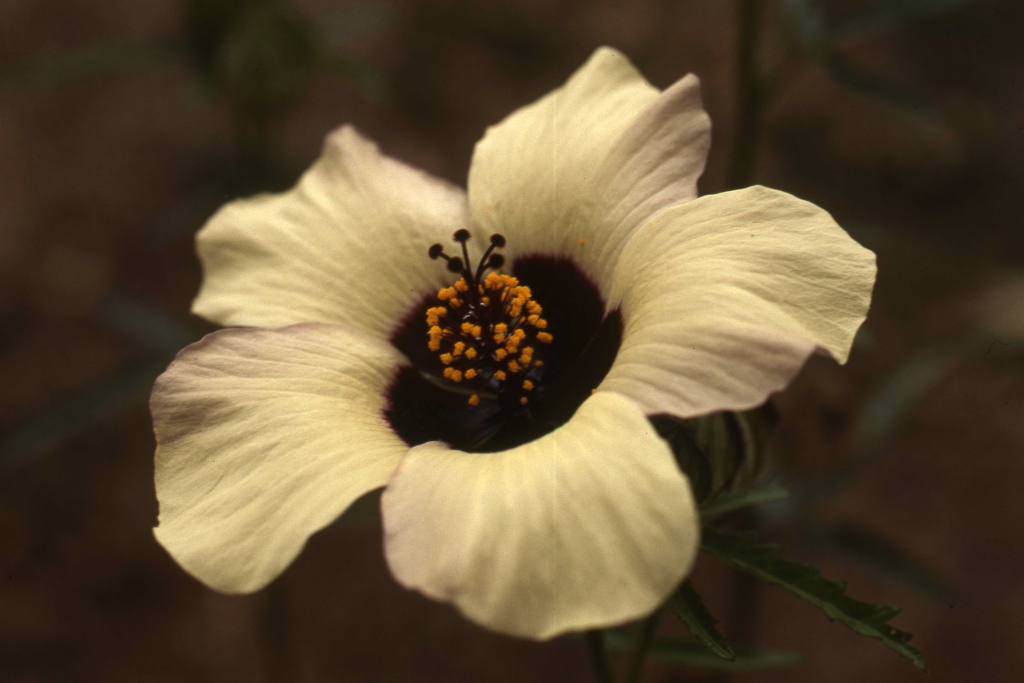Hibiscus tridactylites
Lindl.Ascending to erect annual to c. 60 cm high. Leaves palmately divided into 3 or 5 oblong to cuneate segments, 1–6 cm long, 0.5–15 mm wide, which are again toothed, lobed or pinnatifid; lower surfaces and petioles with scattered stellate and/or simple hairs, upper surfaces glabrous or with sparse simple hairs. Flowers solitary in axils; pedicels 1–7 cm long; epicalyx 7–14-lobed, 5–11 mm long, sparsely long-hispid; calyx c. 1 cm long at anthesis (enlarging to c. 2 cm in fruit), prominently lined by c. 20 purplish longitudinal nerves, the obtuse to acute lobes united for half to three-quarters their length; petals yellow to white, purplish near base, 15–25 mm long, remaining semi-erect. Capsule 10–15 mm long, enclosed by the bladder-like fruiting calyx; seeds broadly reniform, 2–3 mm long, glabrous, tuberculate. Flowers Feb.–Apr.
MuM, Wim, VVP, VRiv, GipP, CVU. Also WA (natualised), SA (naturalised), Qld (native and naturalised), NSW (native and naturalised), ACT (sparingly established). Occurs in agricultural and other disturbed areas in grassland and open woodland in the north and north-west of the state, with an isolated occurrence near Bacchus Marsh in the south.
This somewhat weedy species is now presumed to be native in parts of Australia. However, the distribution of this species is likely to have been greatly increased following disturbance caused by agricultural practices, and it is unclear if this species occurred in Victoria prior to European settlement. Until recently Victorian plants were thought to be the introduced species Hibiscus trionum L. var. trionum, which is native to Europe and central Africa. Plants with simple lower leaves from inland parts of other mainland states have previously been regarded as native, and included in H. trionum var. vesicarius (Cav.) Hochr. These plants are now regarded as a separate species, H. verdcourtii Craven. Likewise, plants from the east coast of Australia and New Zealand are now included in H. richardsonii Sweet ex Lindl. See Craven et al. (2011) for further details. H. richardsonii occurs as a weed in garden beds at the Royal Botanic Gardens in Melbourne, but is otherwise not known to be established in the State.
 Spinning
SpinningCraven, L.A.; de Lange, P.J.; Lally, T.R.; Murray, B.G.; Johynson, S.B. (2011). A taxonomic re-evaluation of Hibiscus trionum (Malvaceae) in Australasia. . *New Zealand Journal of Botany * 49(1): 27–40.





